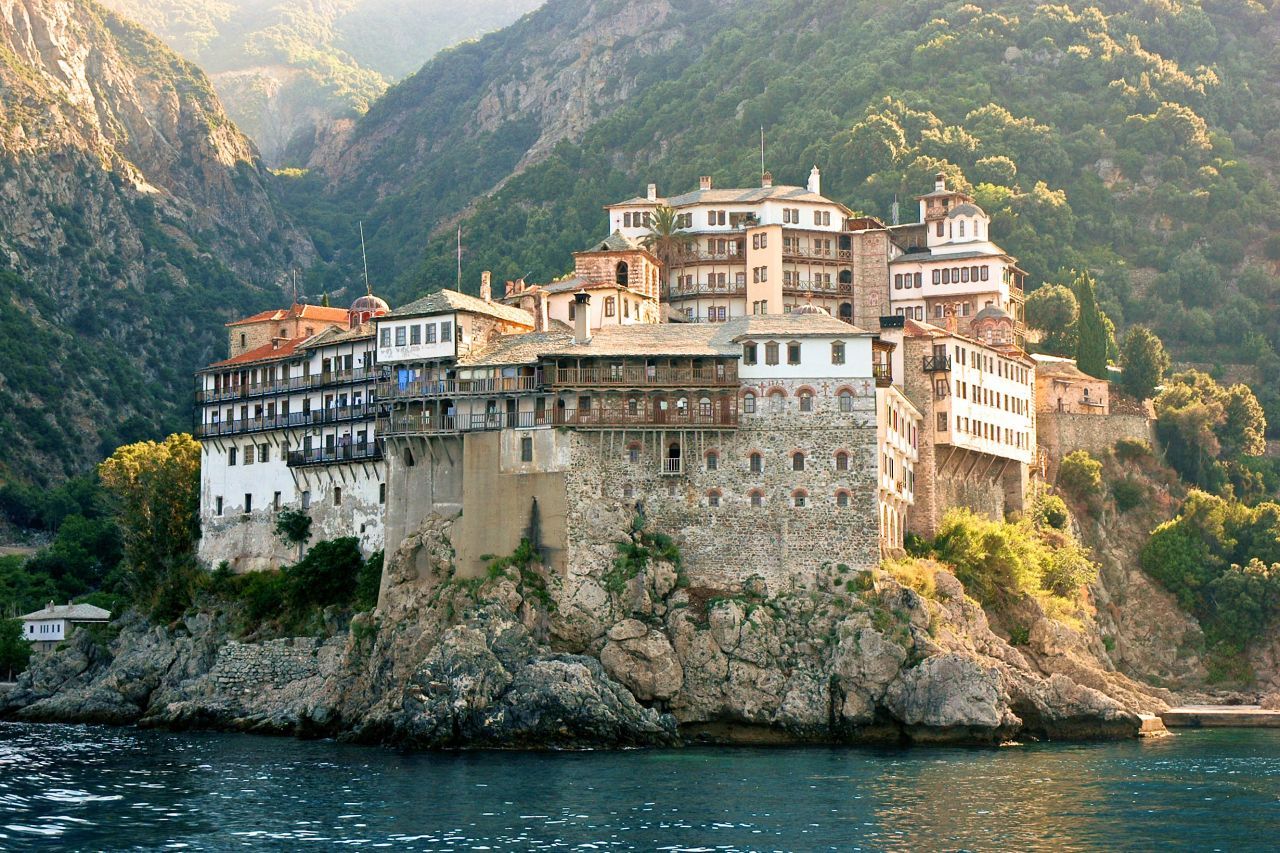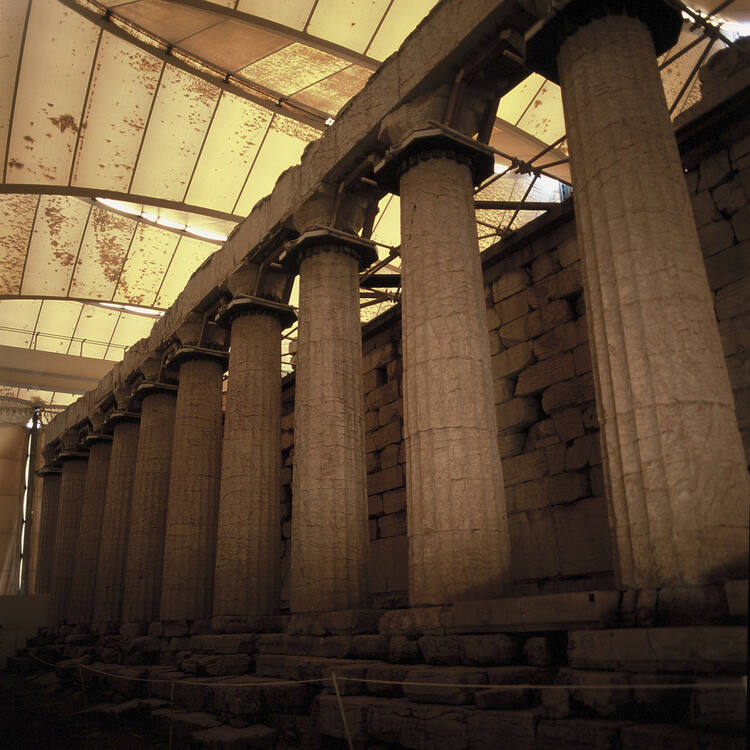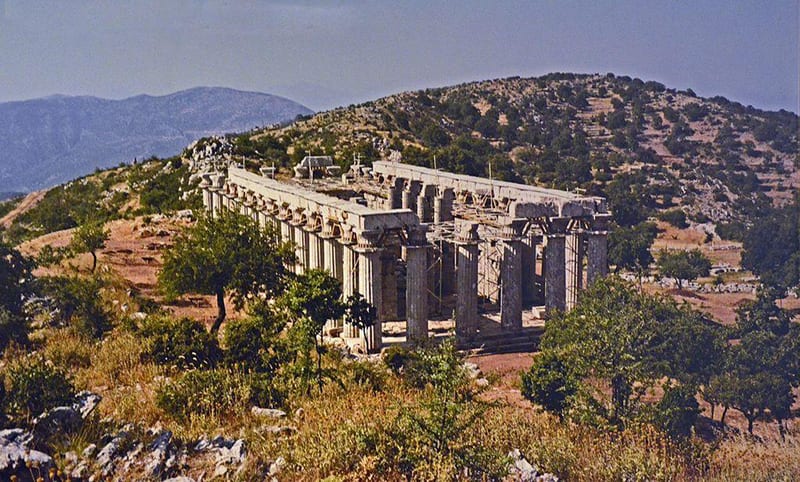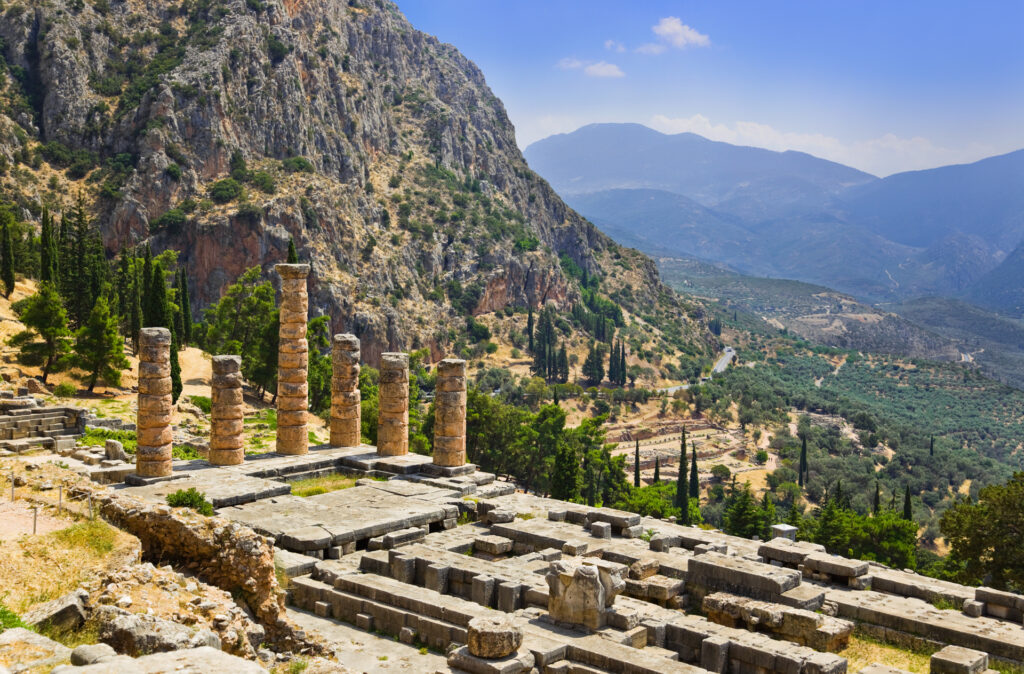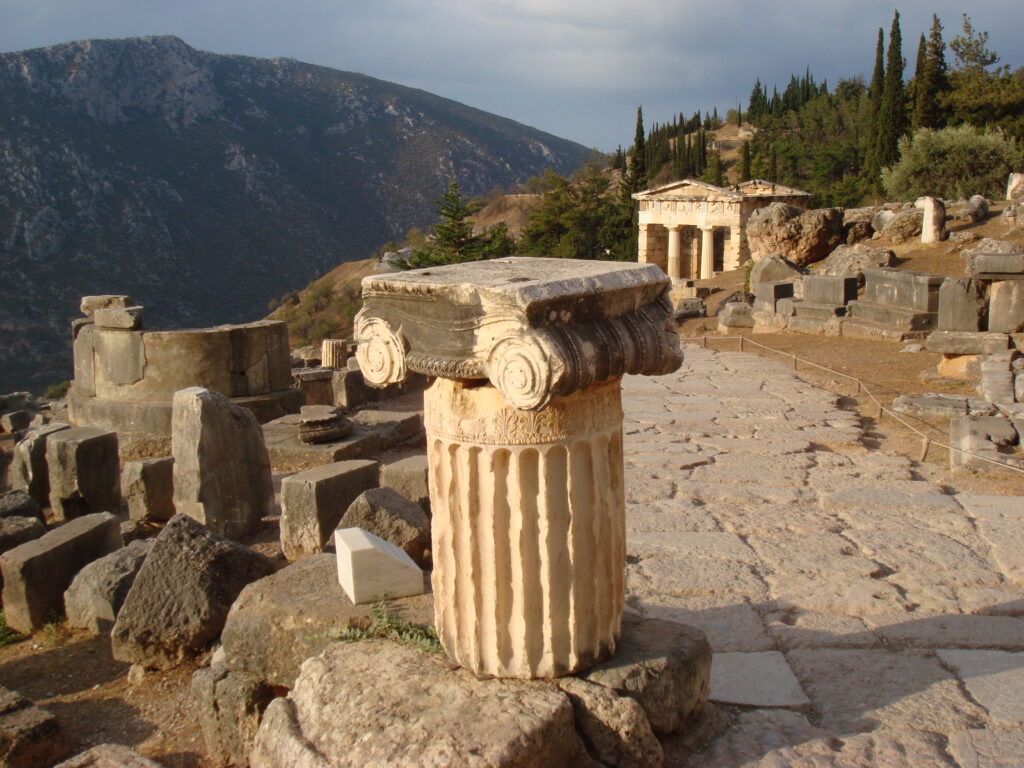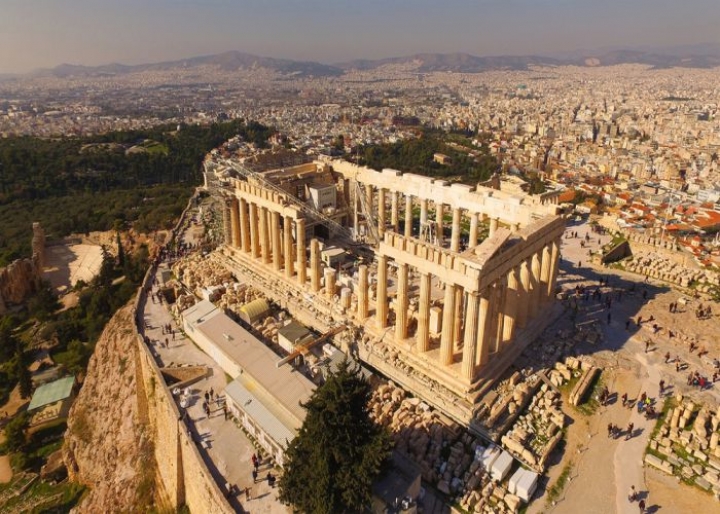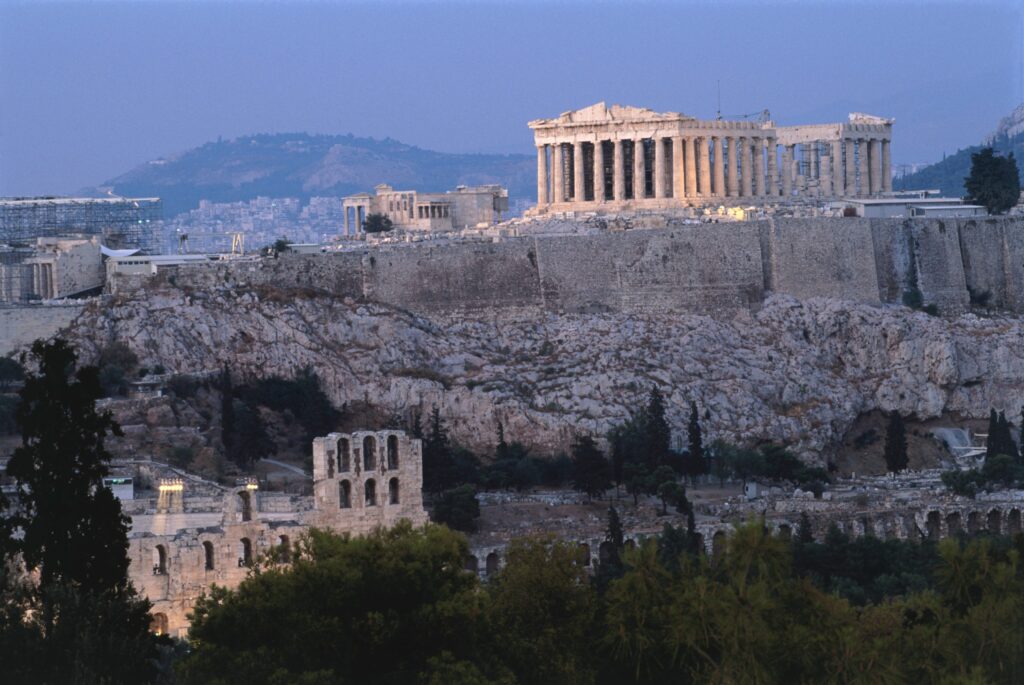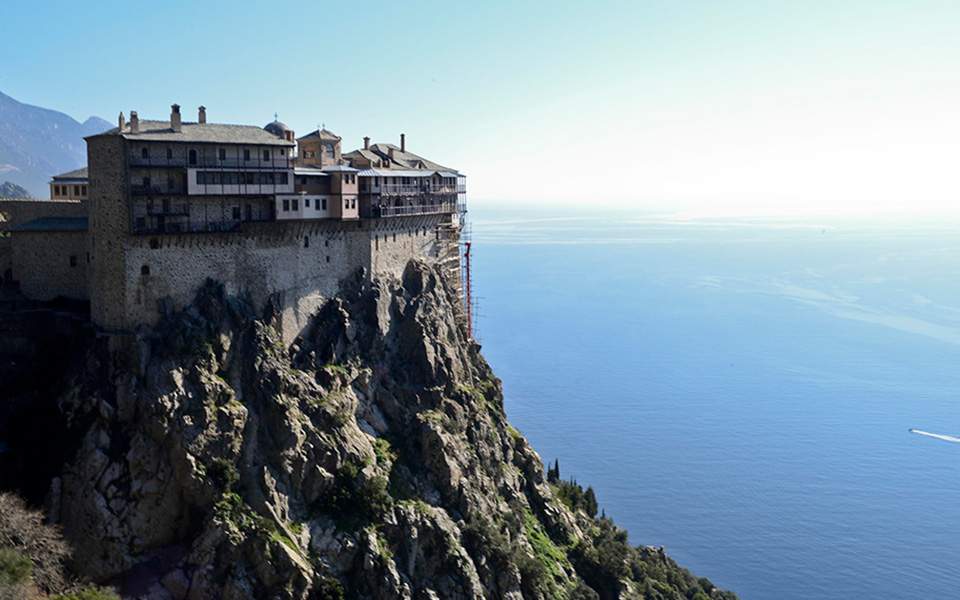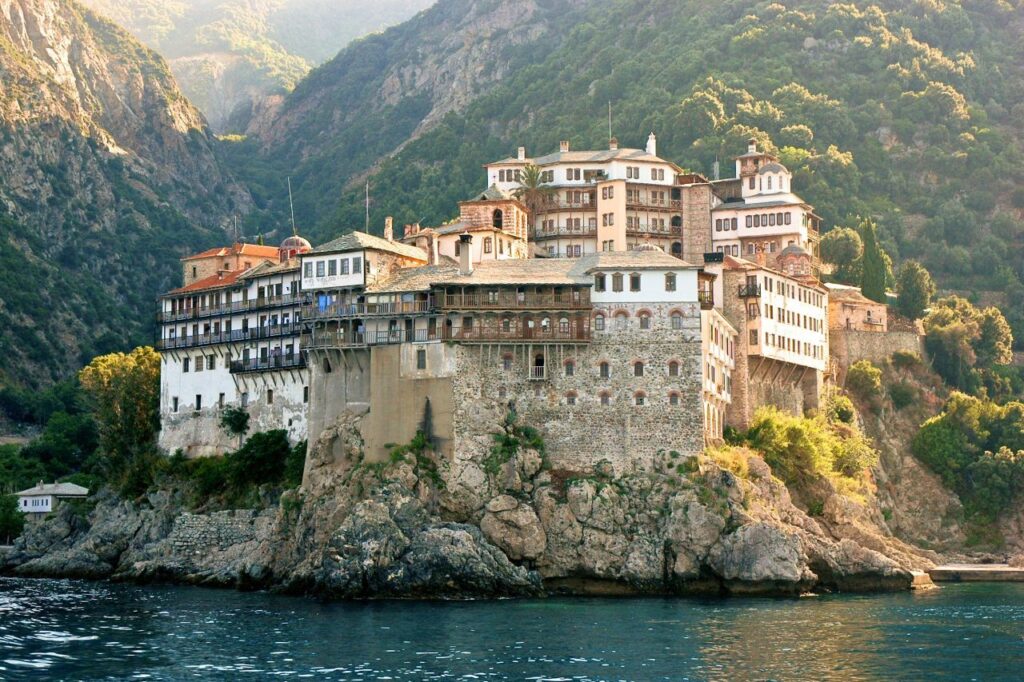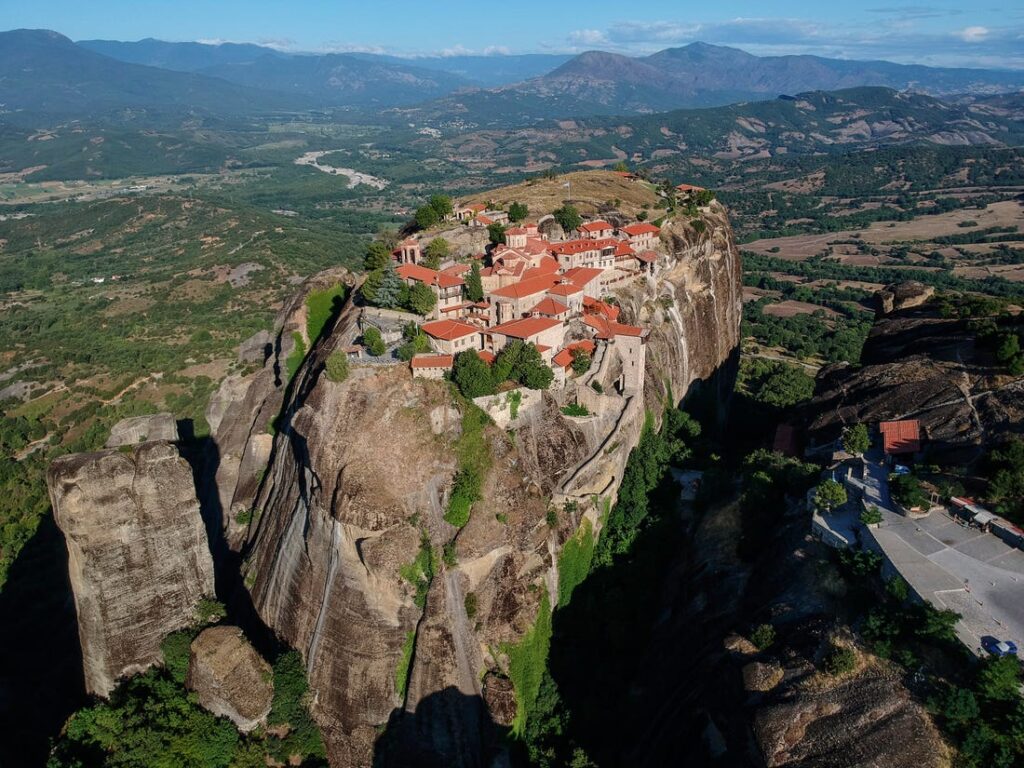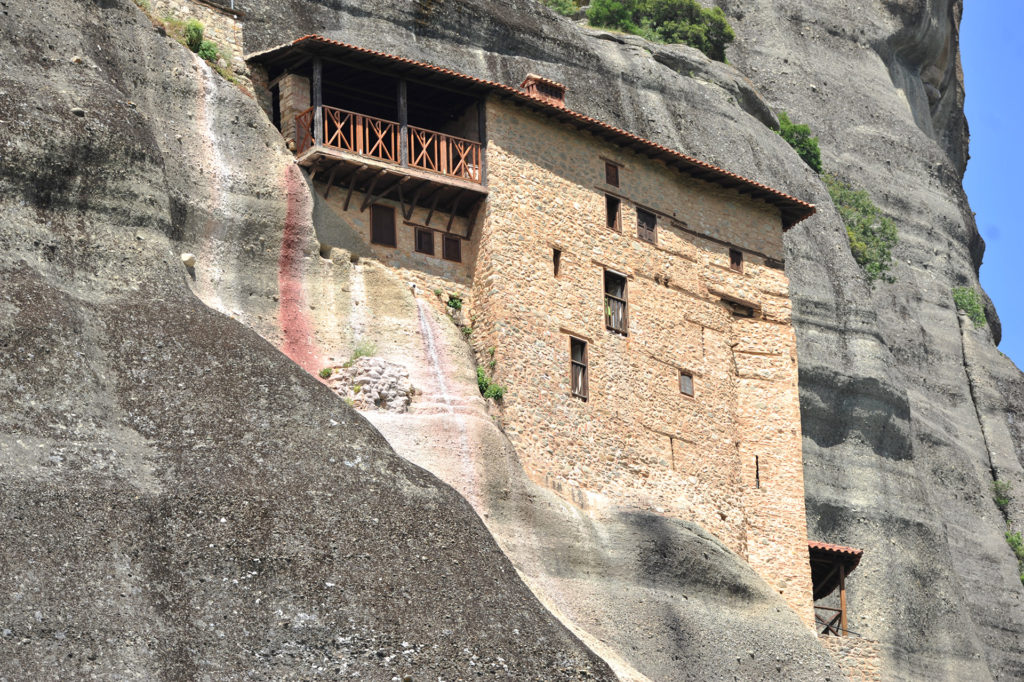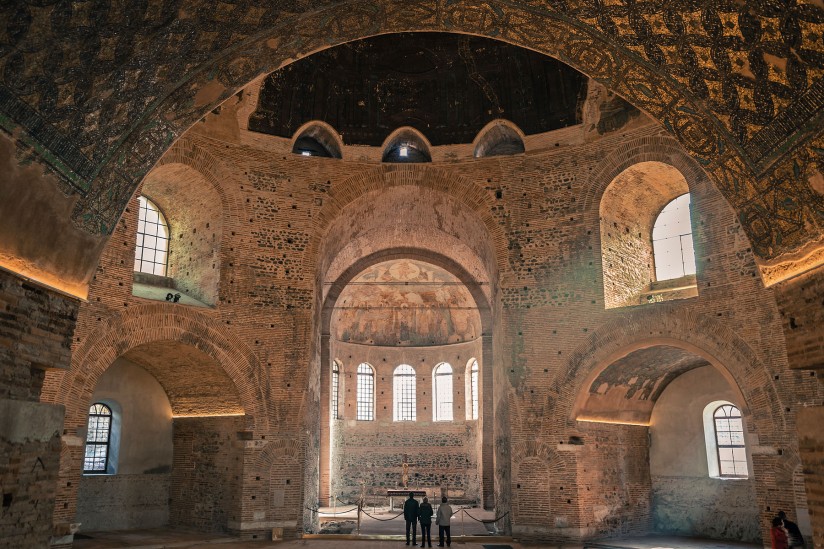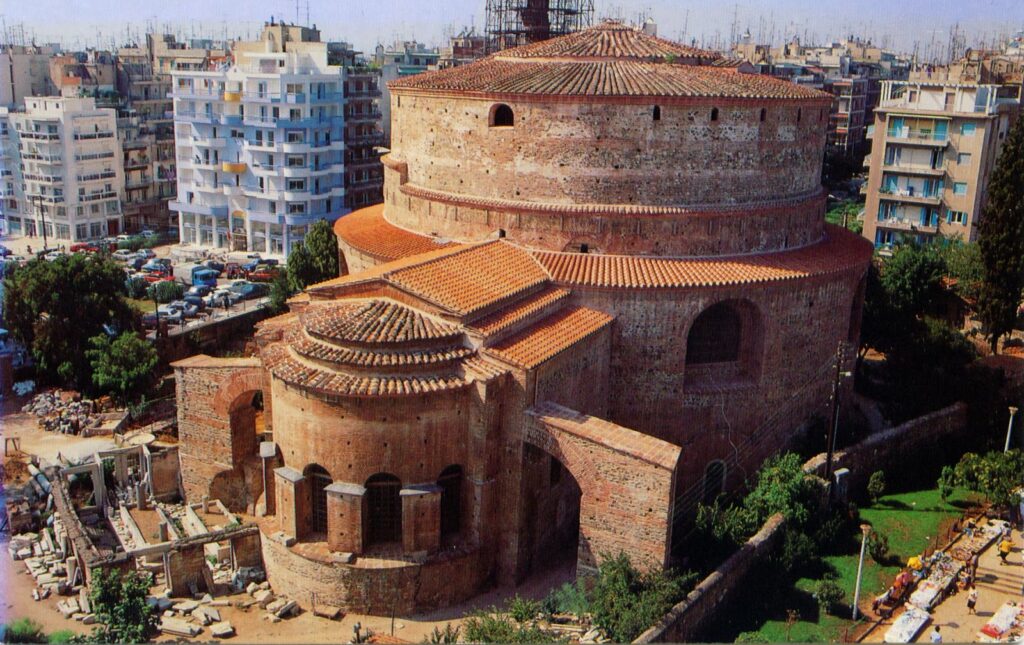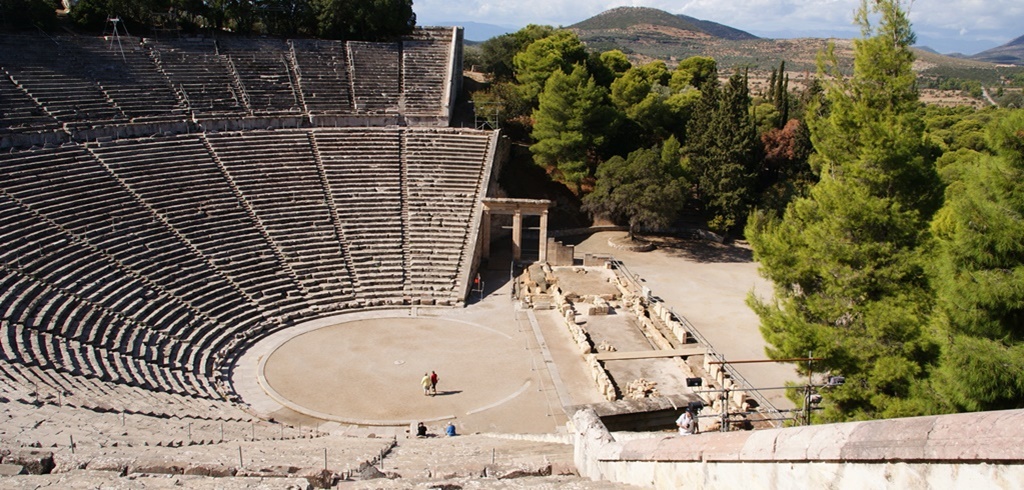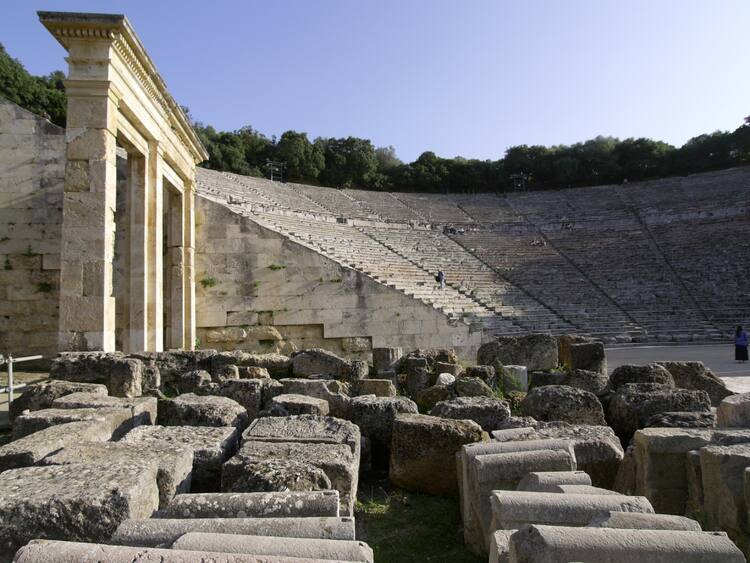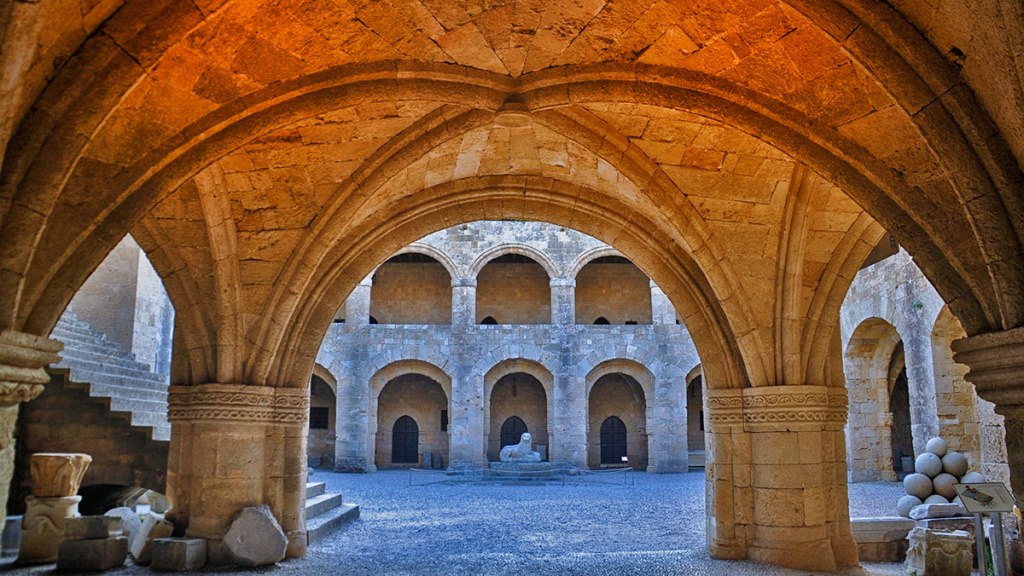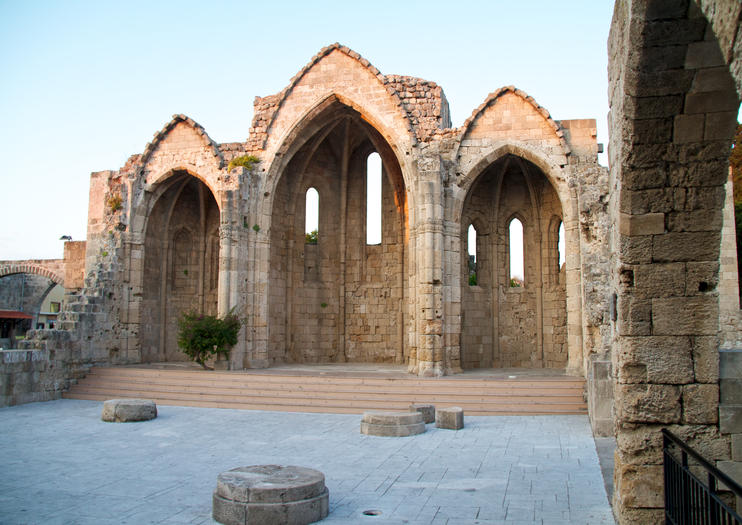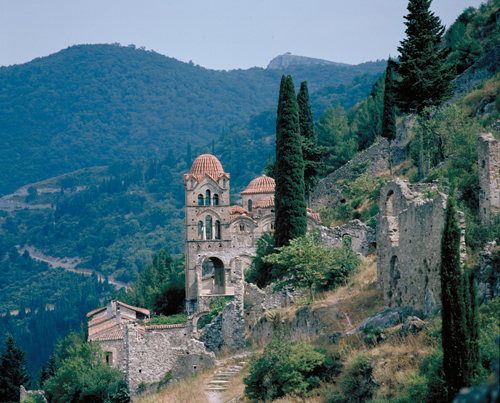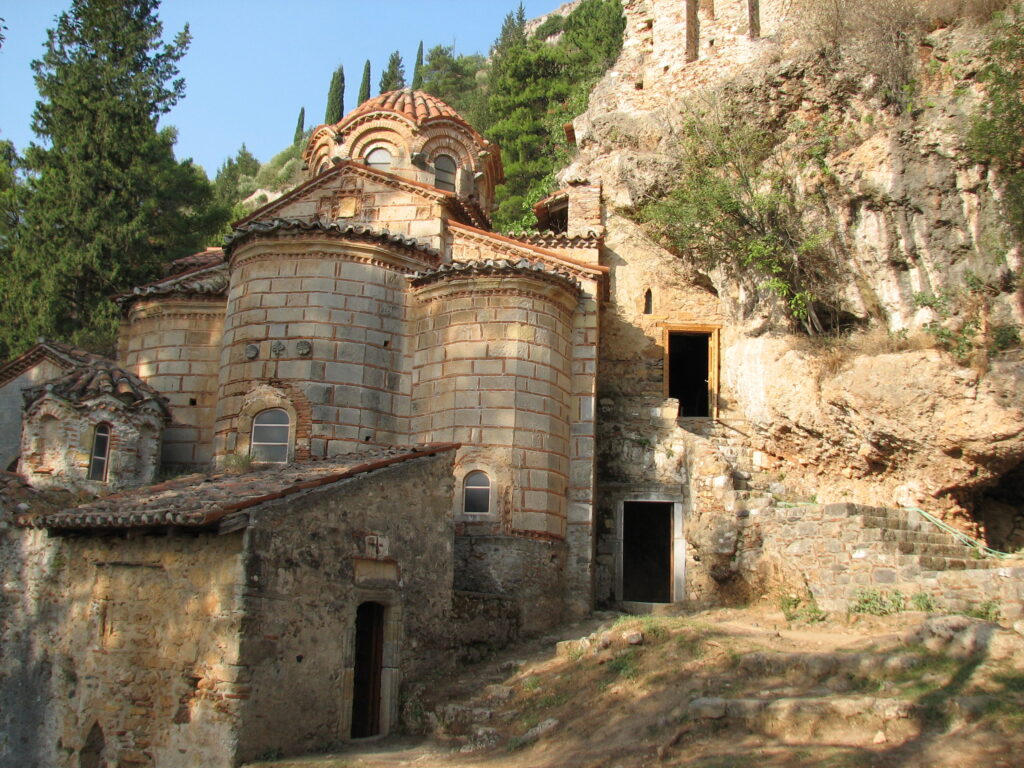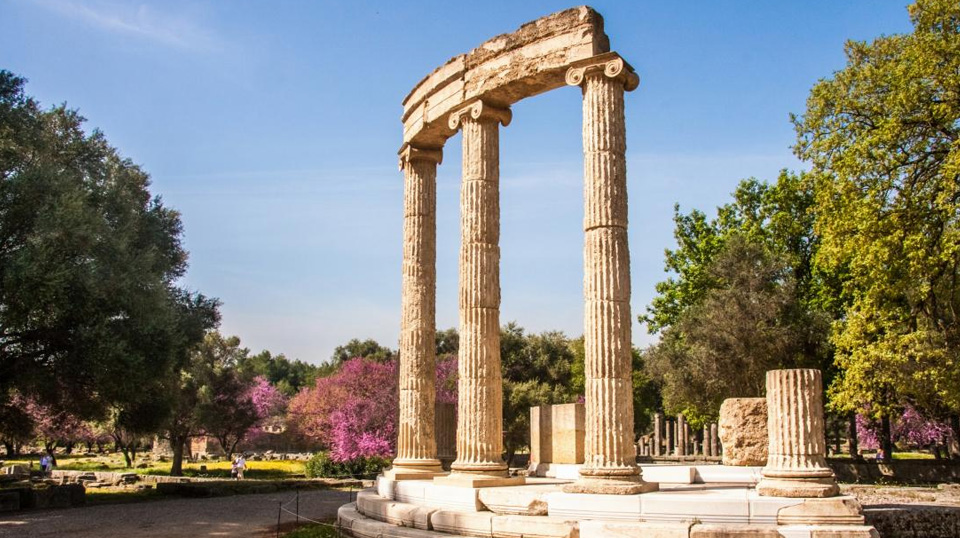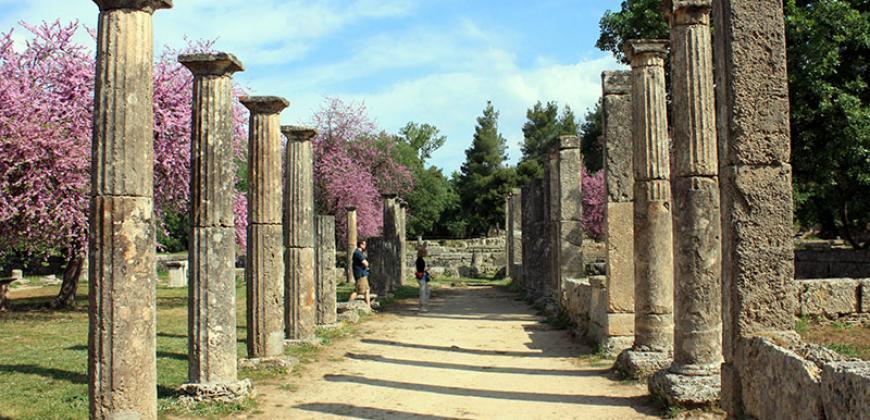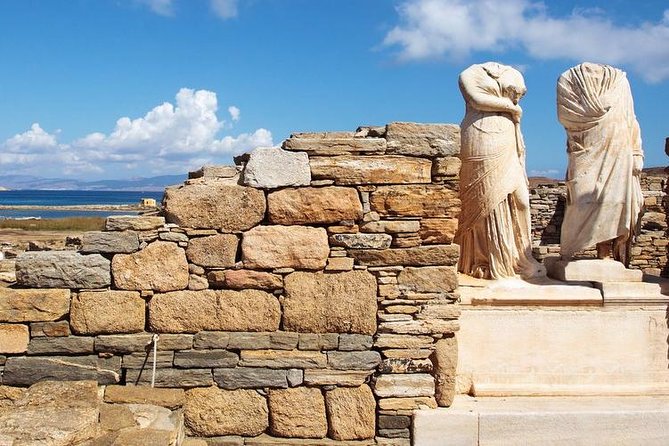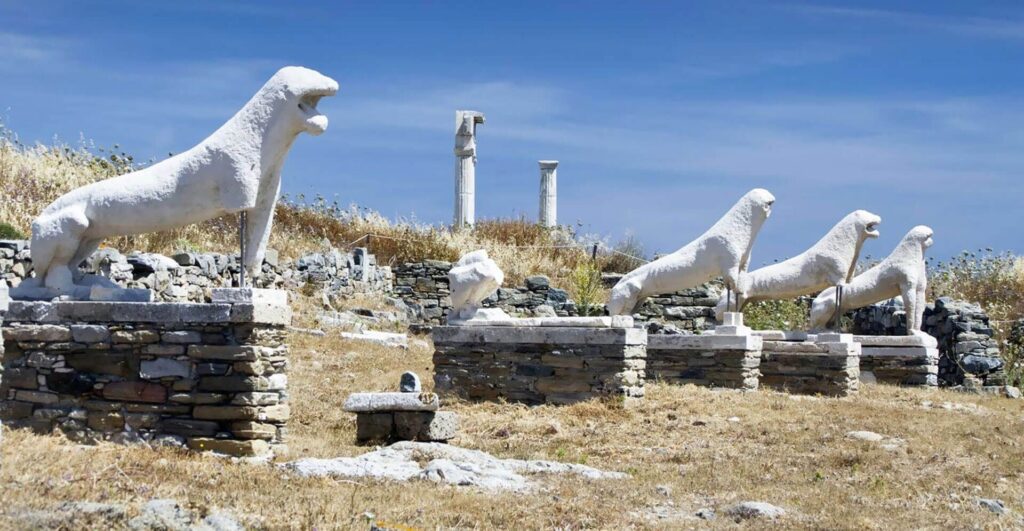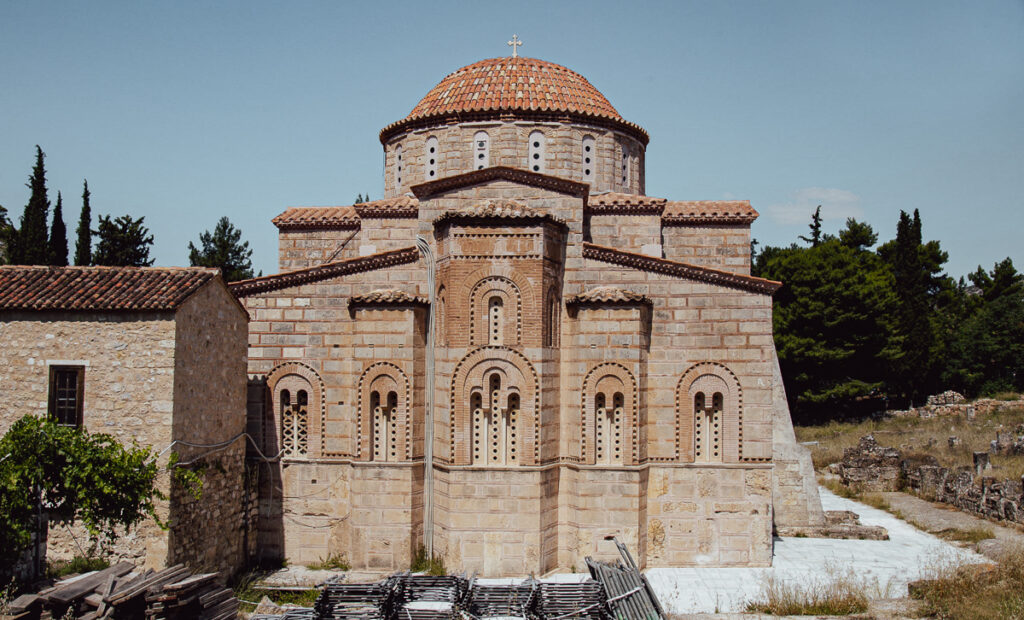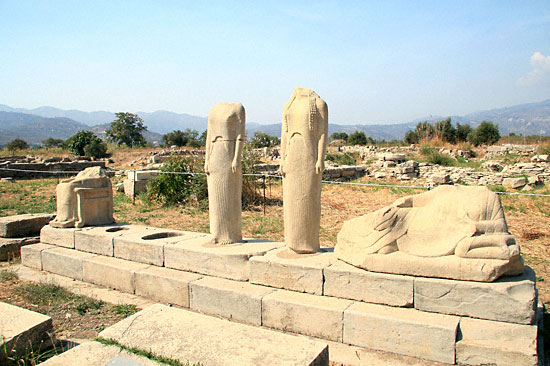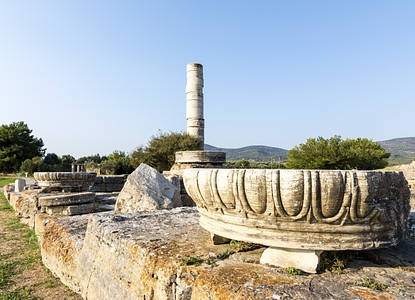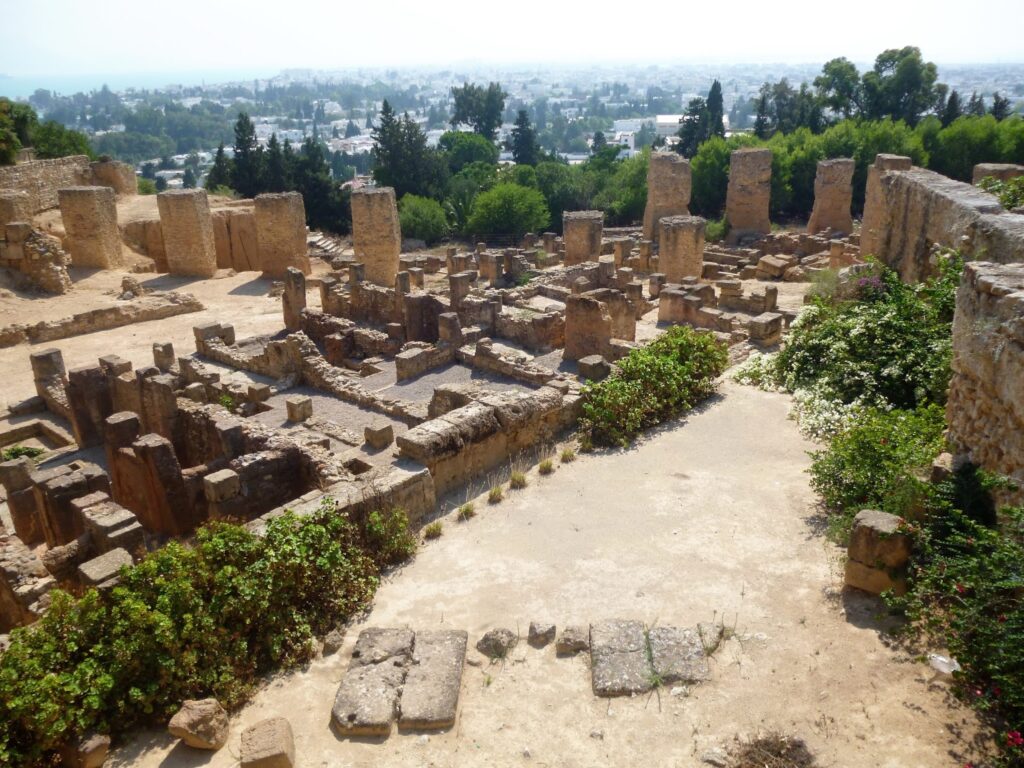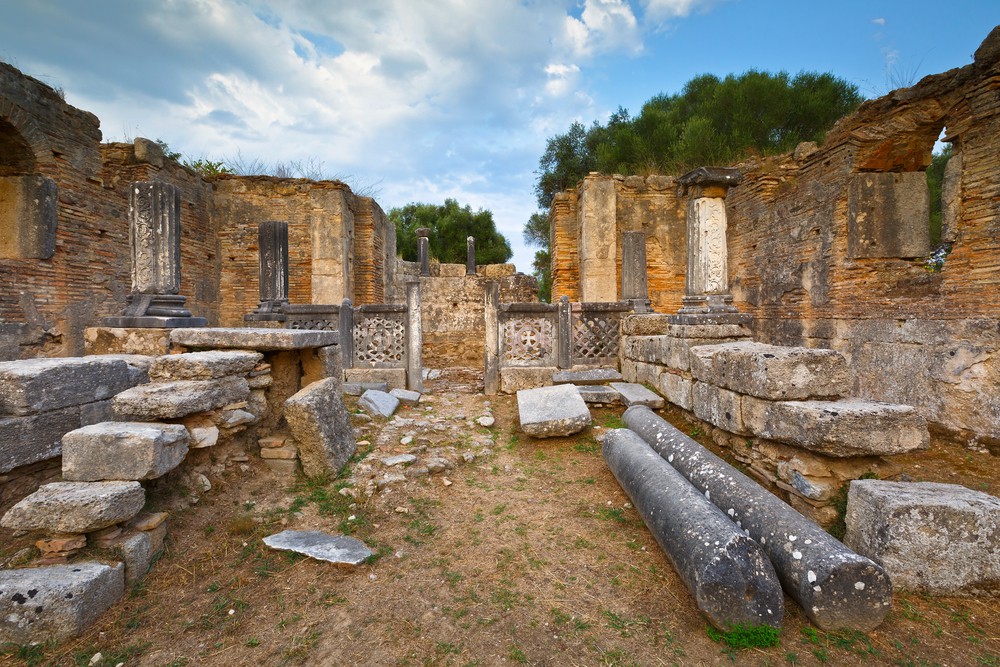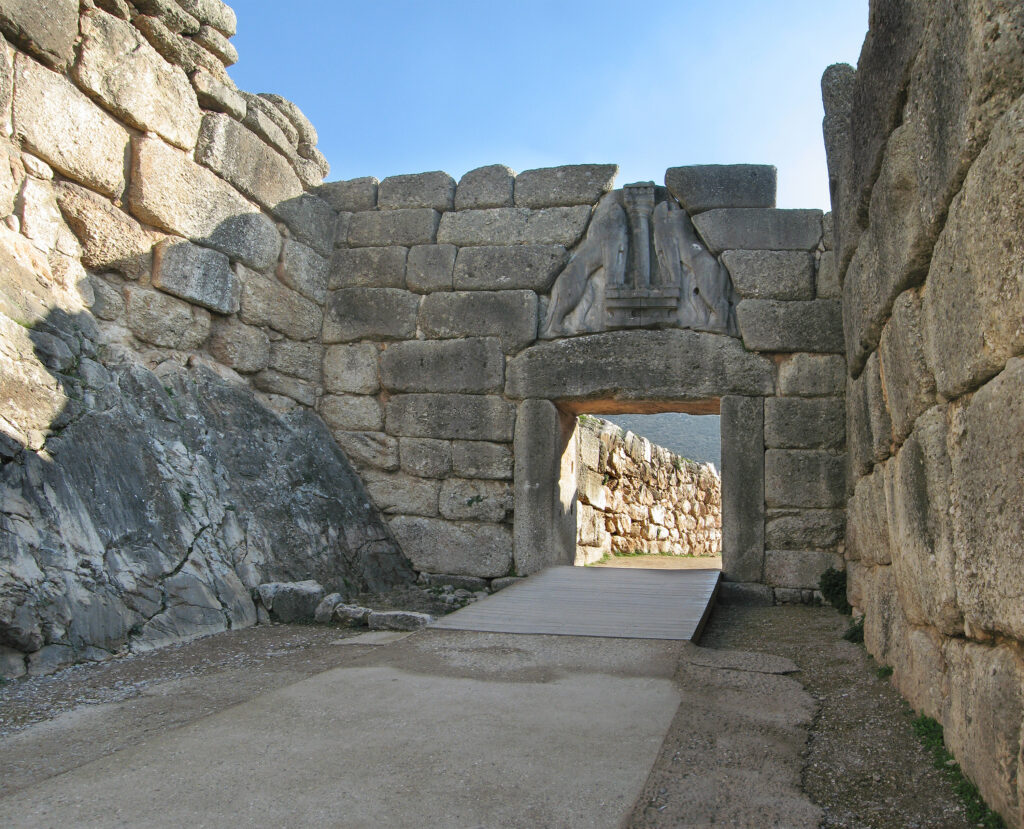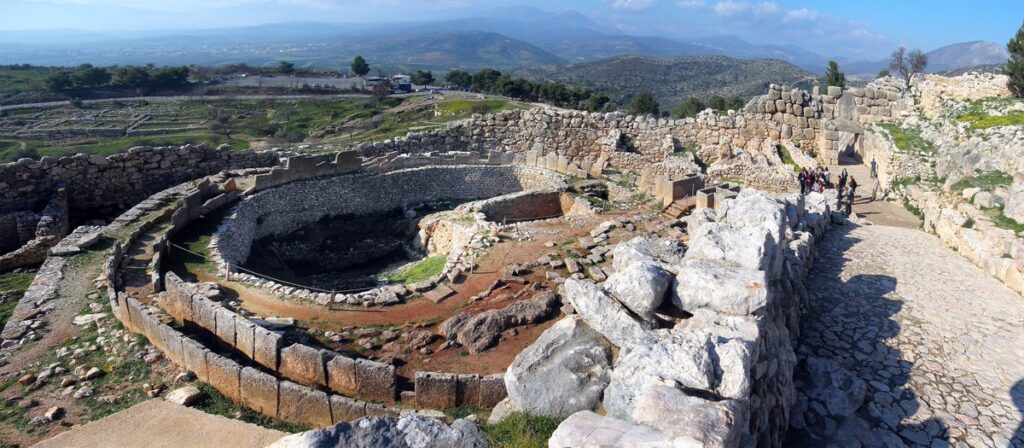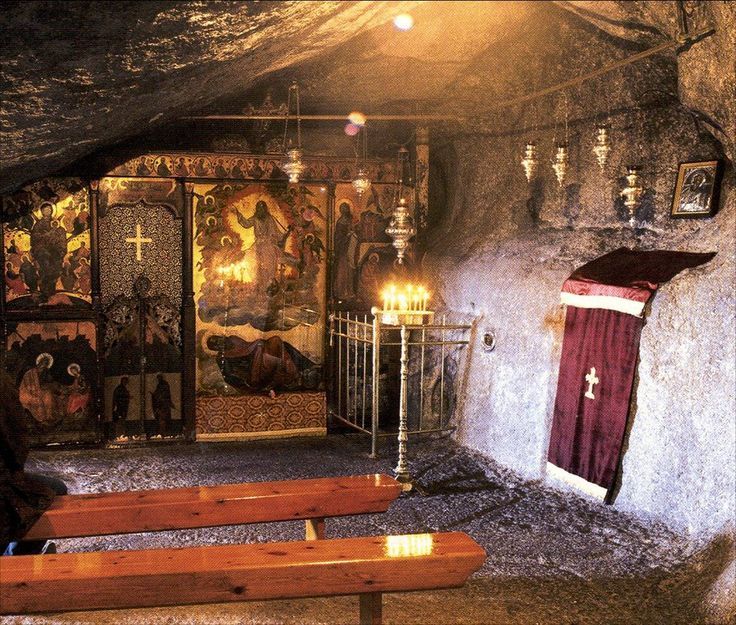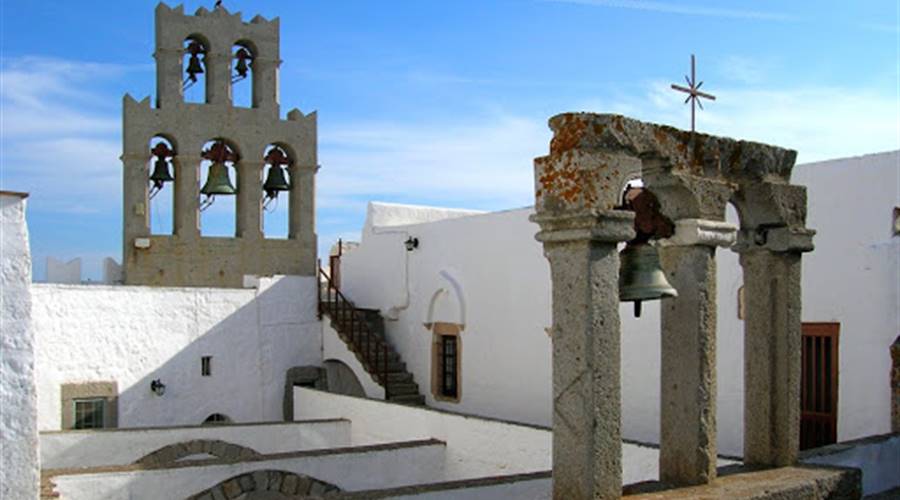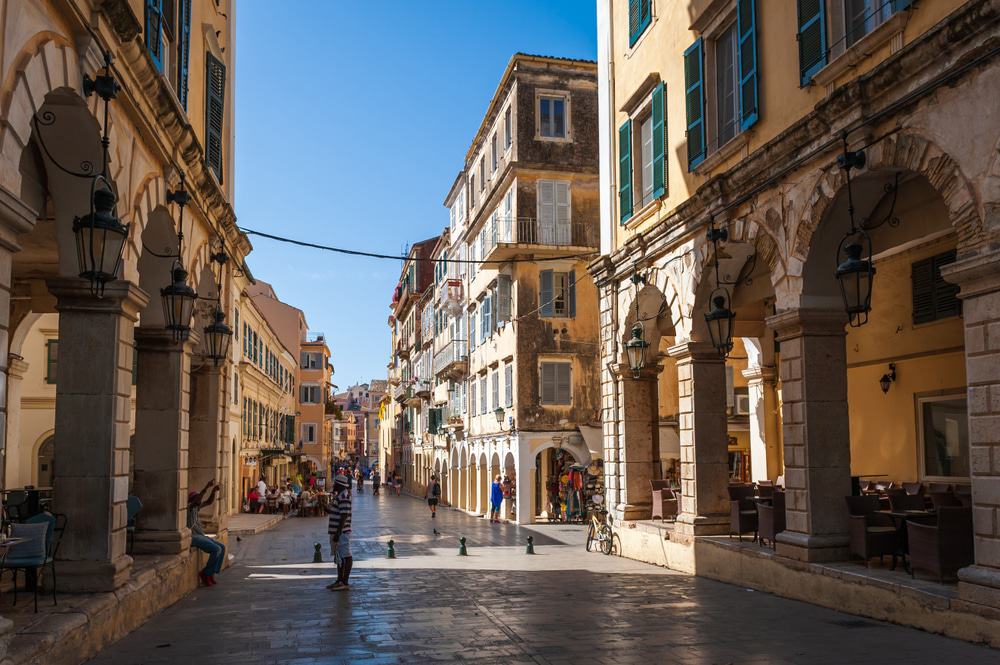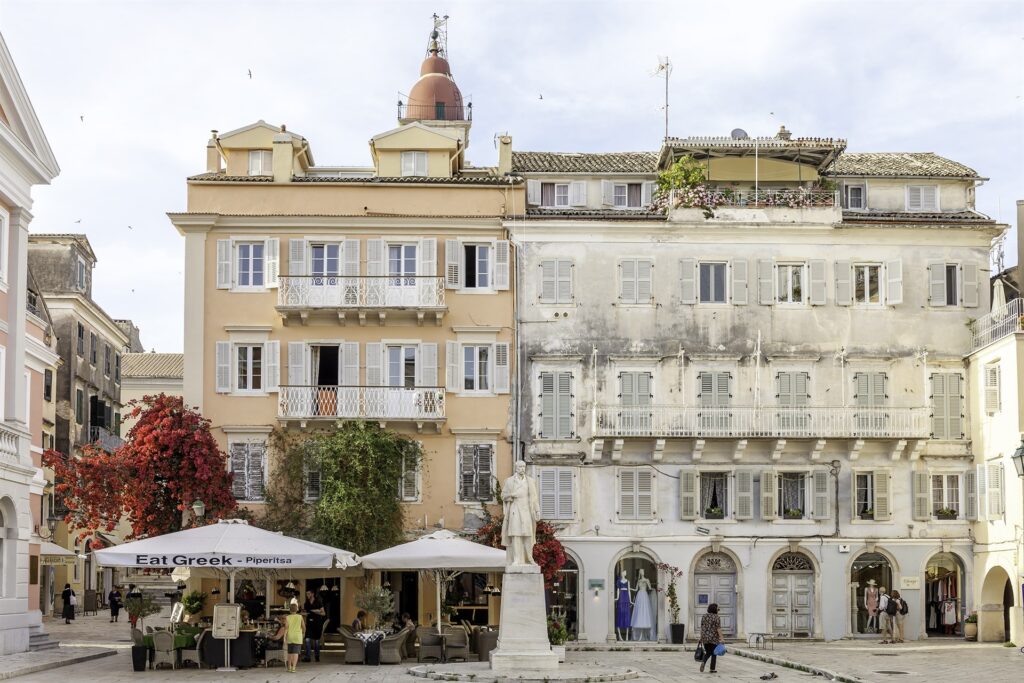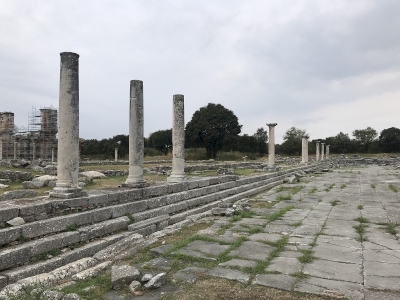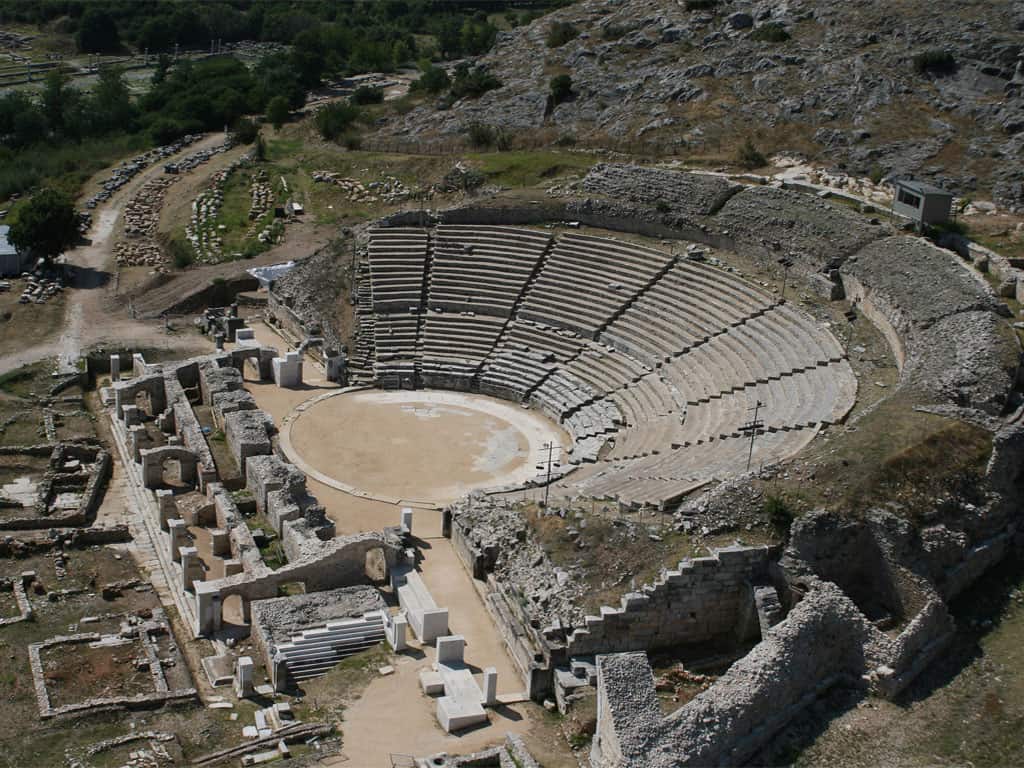The Monastery of the Transfiguration of Christ is the largest and one of the most spectacular monasteries not only in Meteora but all of Greece. It stands atop the highest rock pillar in the area and was founded by Saint Athanasios Meteoriti in the early 14th Century.
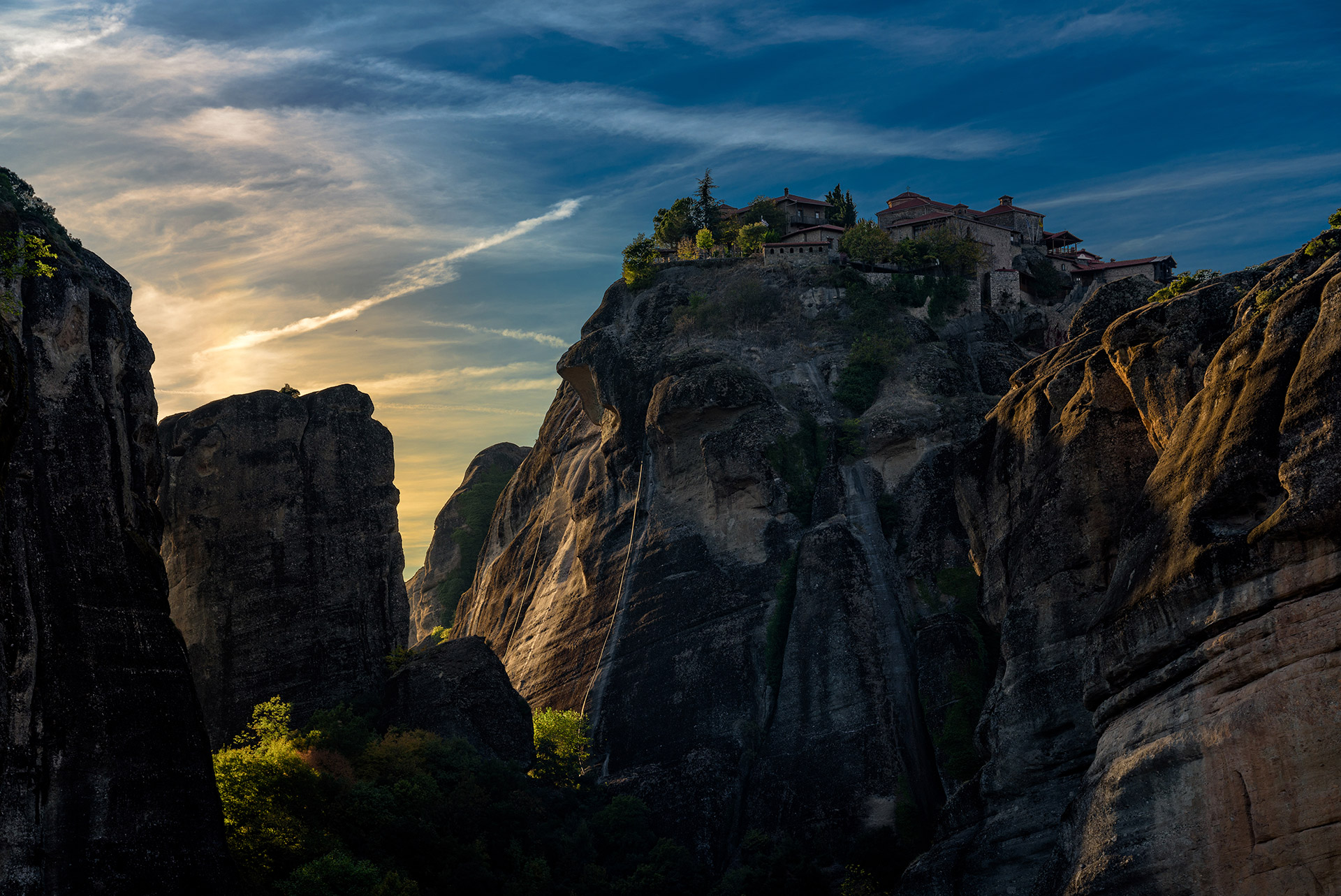
Every year thousands of pilgrims arrive at Meteora, which has been declared a UNESCO World Heritage Site. The region of almost inaccessible sandstone peaks is a holy site where monks settled on these ‘columns of the sky’ from the 11th century onwards. Twenty-four of these monasteries were built, however today, only six monasteries remain open- the Grand Meteoron being one of them.
Great Meteoron Monastery
This particular monastery remains “suspended in the air” (meteoro), because of the cliff formation of a gigantic rock on top of which it was built. The Great Meteoro Monastery or “Megalo Meteoron” is dedicated to the Transfiguration of our Lord and Savior and is decorated with beautiful 16th-century frescoes.
There are three chapels at Great Meteoron Monastery: The Chapel of John the Baptist, the chapel of Saint Constantine, and Saint Helens, of which the latter was built in 1789 and is characterised by its polygonal domed basilicas. The third chapel of the monastery is dedicated to Saint Athanasios.
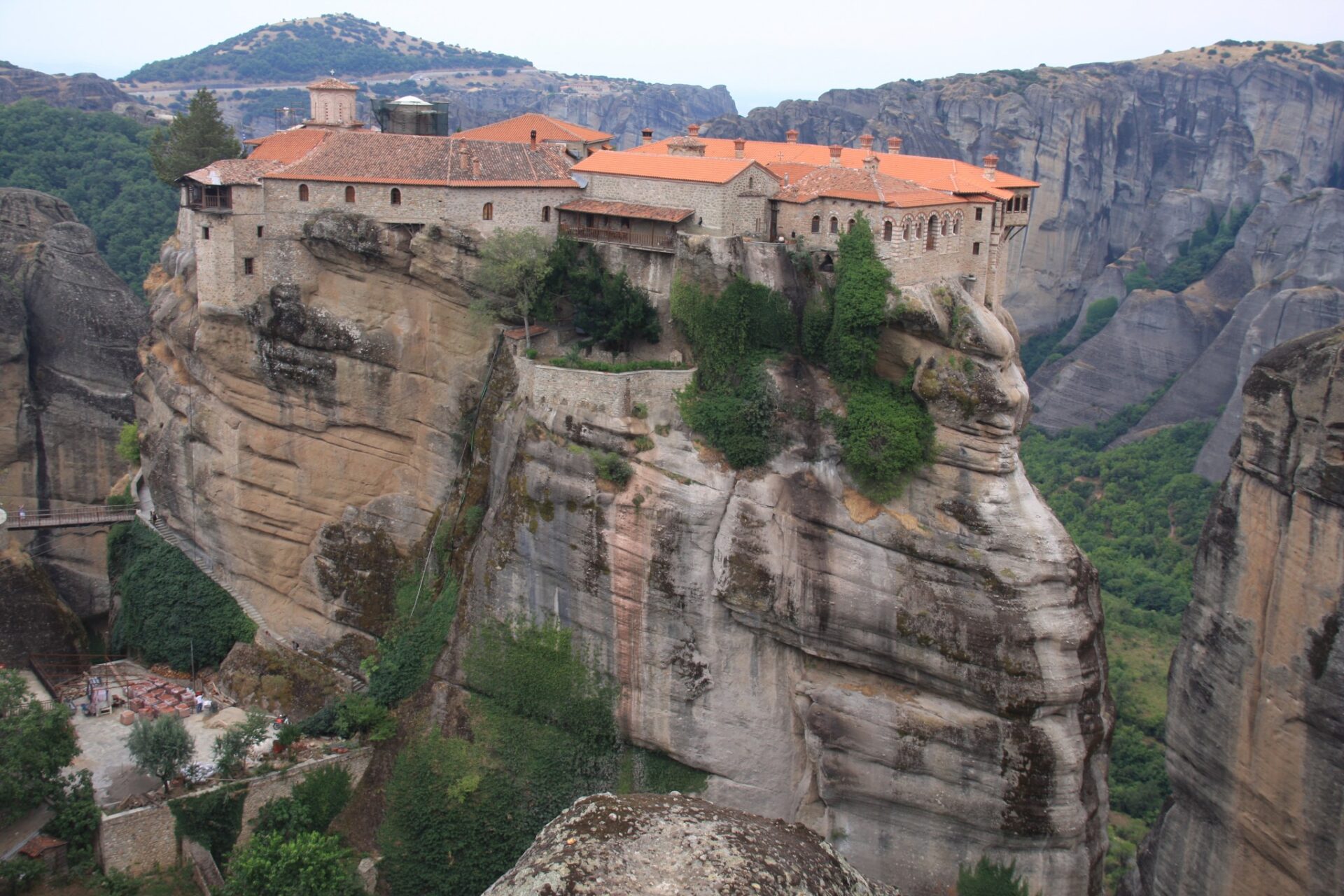
Icons inside the Church
Take time to view the artistic details of some of the best samples of post-Byzantine art of Greece, found inside the church. As you enter, there are two carved wooden icon-stands, the left is of Agios Anastasios and on the right is the icon of the Transfiguration of Christ. There is also an icon of Panagia (Virgin Mary) and Saint Nicholas from the 14th / 15th Century. You will also see icons of Saint John the Baptist, the Annunciation of the Theotokos, and the Archangels.
History of the Monastery
The Great Meteoron is a male Monastery built on the greatest rock of the complex, the Platys Lithos or Playtlithos before the mid-14th century. In the past, monks used scaffolds in order to get supplies to them and they would climb the rocks to reach the monastery. Afterward, nets with hooks, baskets and rope ladders, or even wooden ladders of 40 metres long were used.
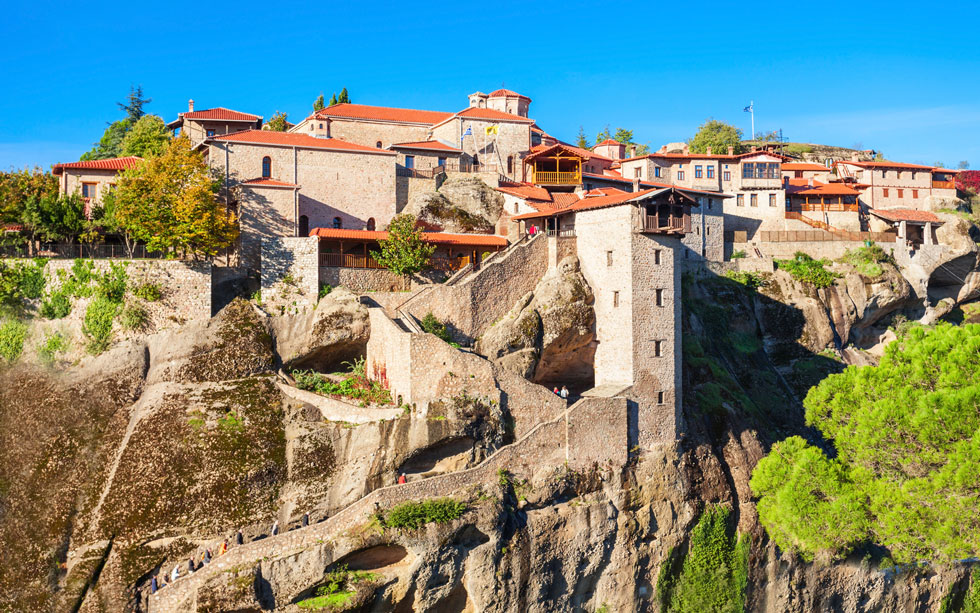
Monks of the Monastery
Monks devoted to Christ, have dedicated their lives to the monastery and hold building materials on their backs, spend hours renovating, restoring, and preserving the monastery, honouring its beauty. As a result, every year, pilgrims and tourists come here by the great mission undertaken there, making Great Meteoron one of the most visited monasteries of Greece.
Exploring the Great Meteoron Monastery
Visitors can admire the beautiful architecture, which includes a cellar with skulls of monks that have passed, and an impressive balcony. The cellar also houses a wonderful folk museum that includes exhibits taken from historical everyday life. Along with the ossuary, explore the main church and its 15th and 16th Century Byzantine frescos and murals. The monastery’s rectory doubles as a museum with artifacts of monastic life and religious relics. Explore the ancient kitchen for a glimpse into the past and into everyday life in this sky-scraping environment.
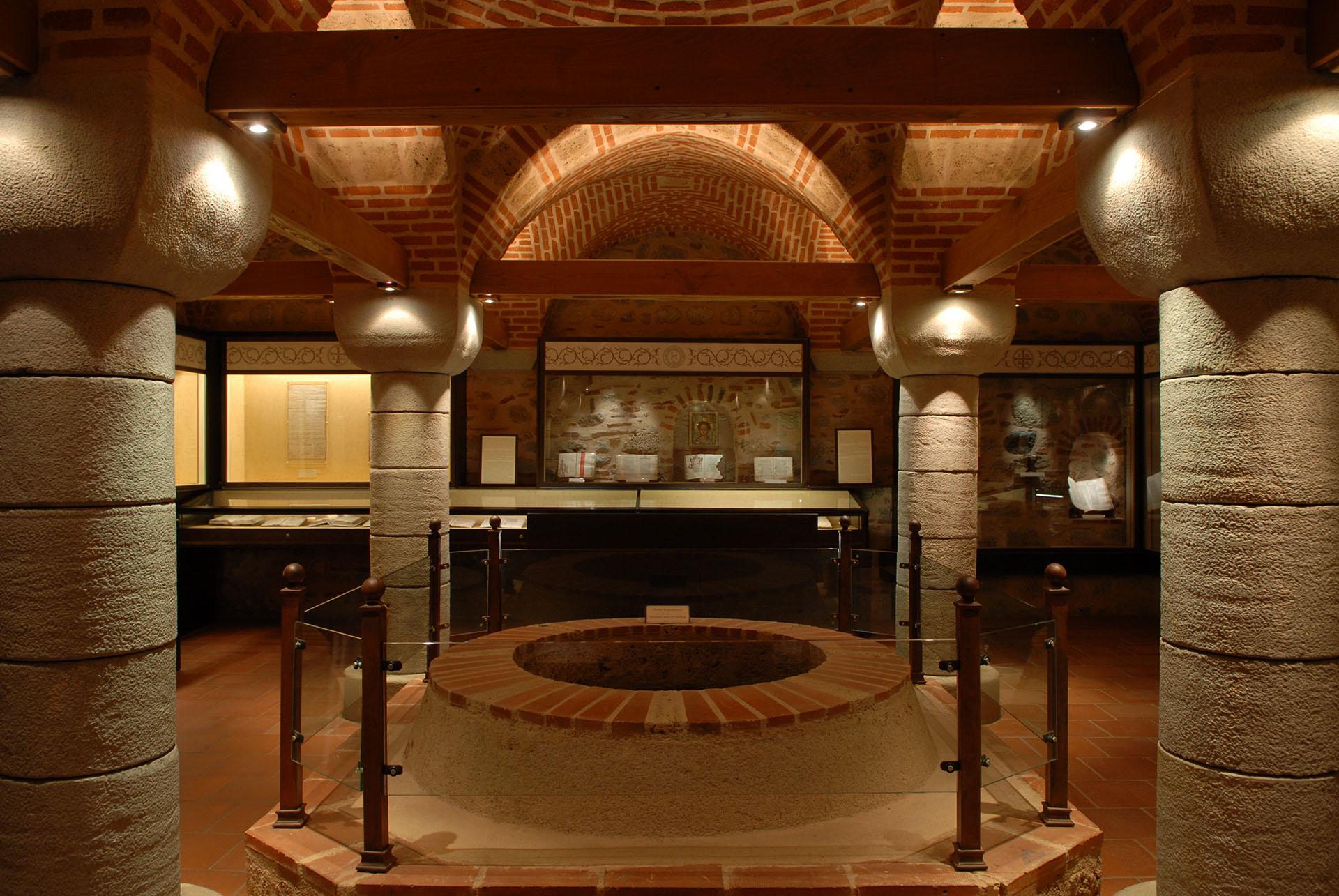
Don’t miss
-Seeing the reliquaries, as the monastery keeps with respect holy relics of many and great Saints of the Orthodox Church.
-The garden of the monastery of Great Meteoron, which offers amazing views of the surrounding landscape.
-The monastery’s museum, where historical artifacts and religious icons of importance are on display.
-The library that’s filled with treasures of books and manuscripts, including Byzantine and post-Byzantine era manuscripts and documents, as well as books concerning the function of the monastery. The monastic library is one of the wealthiest of its kind.
-The collection of the gold-embroidered cloths which is kept in the monastery, they are rich and very remarkable.
-Silverware that dates from different periods (16th -19th century) and depicts various Saints and other decorative themes.
August 6th Feast Day of Transfiguration of Christ
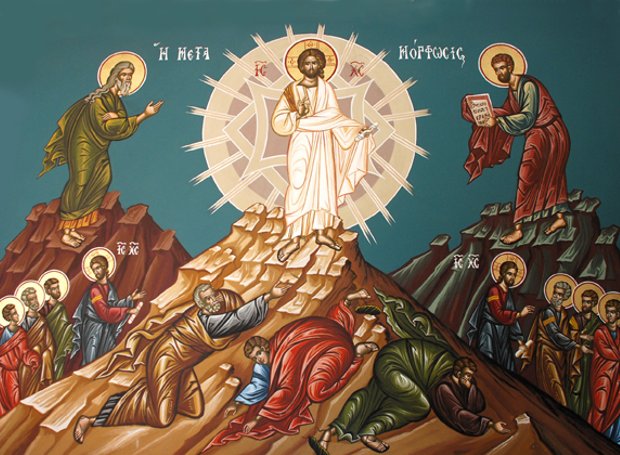
The Feast of the Transfiguration of Our Lord, God, and Savior Jesus Christ is celebrated each year on August 6. This great Feast commemorates the transfiguration or metamorphosis of Christ on Mount Tabor when our Lord appeared in His divine glory before the Apostles Peter, James, and John.
Tips for visiting
-At the entrance of the monasteries, clothing is provided only to women. Men are not allowed to enter if they are wearing shorts above the knee or sleeveless shirts. In any case, dress appropriately.
-The Monastery of the Holy Trinity and Great Meteoro has over 300 steps.
-The monks do not allow anyone to photograph the interiors of the churches and especially the icons, or any of the museums located inside the Meteora monasteries. You can, however, take photos or videos in the gardens and outdoors.
-Check the opening hours of Meteora monasteries here.
Getting there
The most convenient way to visit Meteora from Athens is by car and the most scenic is by train. The duration from Athens by train is 5 hours (transfer at Paleofarsalos), by bus (KTEL) is 4.5 hours (transfer at Trikala) and 3.5 hours by car. From Thessaloniki by train, it takes 3 hours (transfer at Paleofarsalos), by KTEL is 3 hours (transfer at Trikala) and 2.5 hours by car.

